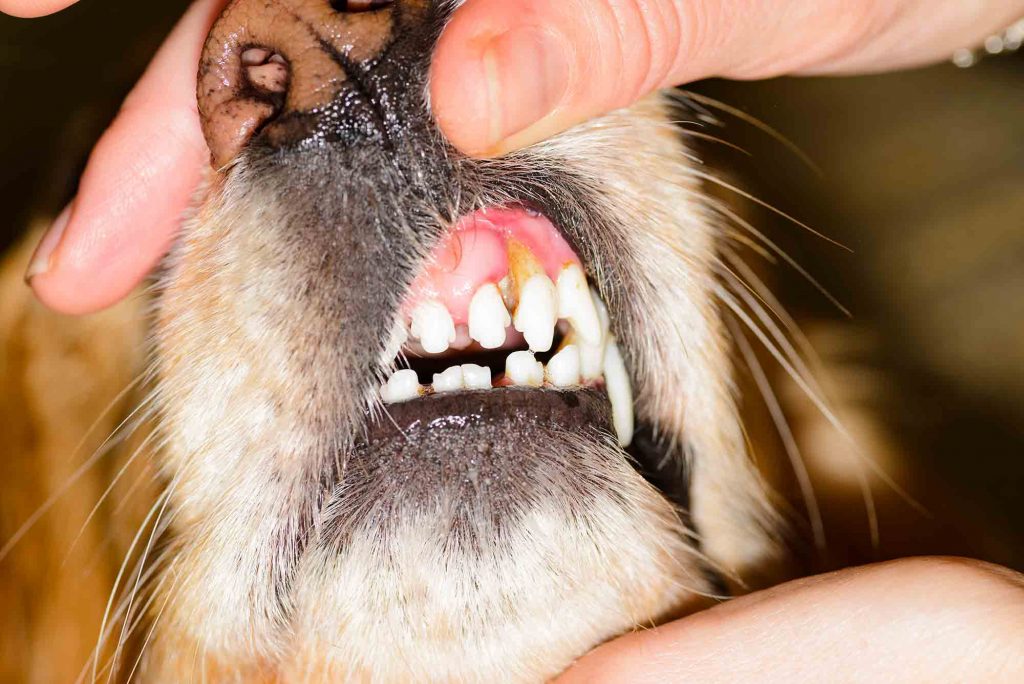The Four Stages of Pet Dental Disease
 Pet dental disease, also called periodontal disease, is one of the most common clinical conditions seen by our veterinarians. This comes as no surprise when we consider that most adult dogs and cats show some signs of the disease by the time they reach 3 years of age. If left untreated, pet dental disease can lead to pain, tooth loss, infection, and even damage to the vital organs, such as the heart, liver, and kidneys.
Pet dental disease, also called periodontal disease, is one of the most common clinical conditions seen by our veterinarians. This comes as no surprise when we consider that most adult dogs and cats show some signs of the disease by the time they reach 3 years of age. If left untreated, pet dental disease can lead to pain, tooth loss, infection, and even damage to the vital organs, such as the heart, liver, and kidneys.
The dental health of our patients is important to us at Lone Tree Veterinary Medical Center. In recognition of National Pet Dental Health Month, which is observed every February, we’d like to place the spotlight on periodontal disease and what pet owners can do to prevent and treat this serious condition.
What Is Periodontal Disease?
Periodontal disease in pets occurs when plaque film and tartar (hardened plaque) build up on the teeth both above and below the gum line. This accumulation irritates the gum tissue and allows bacteria to flourish, leading to damage of the supportive structures of the teeth.
Significant pain, oral infection, bone and tooth loss, and even systemic damage can occur as a result of untreated periodontal disease.
4 Stages of Pet Dental Disease
Pet dental disease comes in four stages:
Stage 1 – Early stage gingivitis, which is inflammation of the gums in response to the presence of tartar and bacteria. You may observe some gum swelling. A thin red line on the gums next to the teeth may also be visible during this stage.
Stage 2 – Early periodontitis, this stage occurs when there is a small amount of bone loss – less than 25% – visible on oral radiographs. You may notice inflammation of your pet’s gums, bad breath, and some visible plaque and tartar. A professional cleaning is needed to remove the plaque and tartar, and to reverse the progress of dental disease.
Stage 3 – Serious dental damage begins to occur at stage 3, also known as moderate periodontitis. Bone loss of 25-50% is visible on oral radiographs. Gums become swollen and irritated, and bleed easily. There is loss of gum attachment to the tooth, forming areas known as periodontal pockets. Your pet may also experience bad breath and significant pain, and need to have infected and/or damaged teeth removed.
Stage 4 – Extreme, chronic periodontal disease is the 4th and final stage. Bone loss of 50% or higher is visible on oral radiographs. Your pet is not only in severe pain but is at risk of losing multiple teeth. Your pet is also at risk of developing a systemic infection. This infection causes damage to internal organs by entering through the mouth and into the bloodstream and spreading throughout the body.
Preventing and Treating Pet Dental Disease
An oral examination is an important part of your pet’s annual wellness exam. A thorough exam of your pet’s mouth will help our veterinarian determine the next step in your pet’s oral care. Most pets require regular cleanings performed under general anesthesia in order to ensure the health of their teeth, as well as to correct any problems caused by periodontal disease.
Regular teeth brushing is an essential part of your pet’s ongoing oral health regiment. Your veterinarian will be happy to demonstrate proper brushing technique and answer any questions you have. Daily brushing, combined with checkups and dental cleanings will help your pet have a healthier and more comfortable life.
As always, your team at Lone Tree Veterinary Medical Center is here for you and your pet! Don’t hesitate to contact us to schedule your pet’s next visit.



